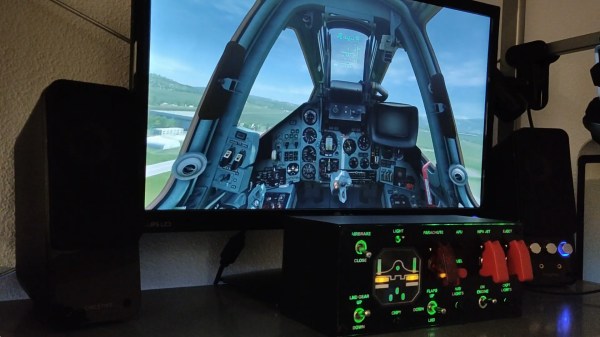Anyone with more than a passing interest in flight simulators will eventually want to upgrade their experience with a HOTAS (Hands On Throttle-And-Stick) setup that has buttons and switches for controlling your virtual aircraft’s assorted systems, which are well supported by games such as Microsoft Flight Simulator (MSFS). But a traditional HOTAS system can be a bit of an investment, so you might want to thank [Vaibhav Sharma] for the virtualHOTAS project that brings a configurable HOTAS interface to your phone — just in time to try out that Dune expansion for MSFS.
The phone’s orientation sensors are used as a joystick, and on the screen, there’s both sliders and buttons you can use as in-game controls. On the back-end there’s a Python program on the computer which exposes a webserver that the phone connects to, translating sensor and press data without the need for an app. This works wonderfully in MSFS, as [Vaibhav] shows us in the video below. What’s more, if you get tired of the touchscreen-and-accelerometer controls, you can even connect a generic smartphone-designed game controller platform, to have its commands and movements be translated to your PC too!
All the code is open source, and with the way this project operates, it will likely work as a general-purpose interface for other projects of yours. Whether you might want to build an accessibility controller from its codebase, use it for your robot platform, maybe simply repurpose this project for any other game, [Vaibhav]’s creation is yet another reminder that we’re carrying a sensor-packed platform, and it might just help you build a peripheral you didn’t know you needed.
Don’t have a phone handy? Perhaps an Xbox controller could work with just a few 3D printed upgrades, or you could stock up on buttons and build your own joystick from scratch. Oh, and keeping HOTAS principles in mind can be pretty helpful — you might get to redesign the venerable computer mouse, for instance!
Continue reading “Take Control Of MS Flight Sim With Your Smartphone”












